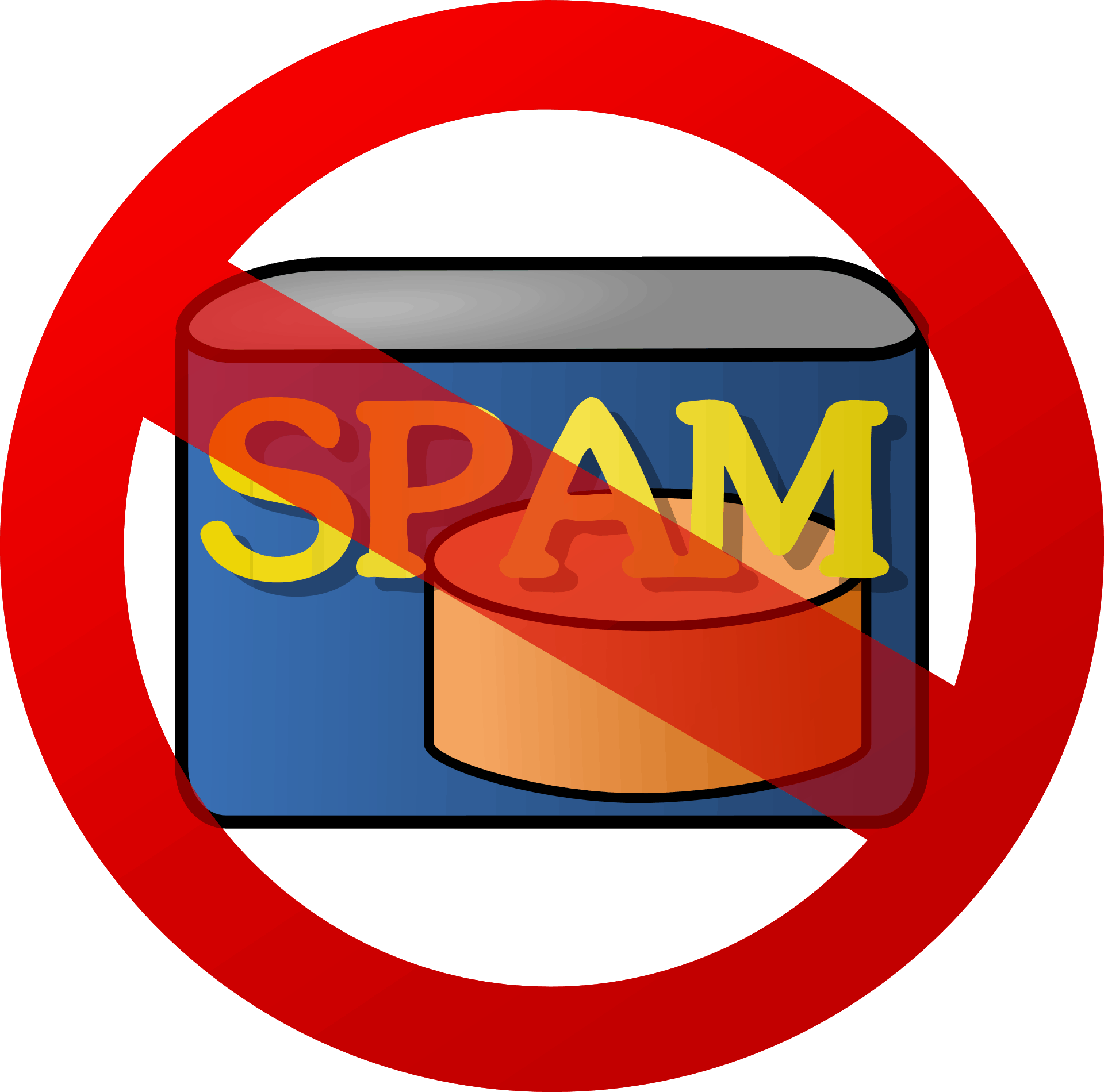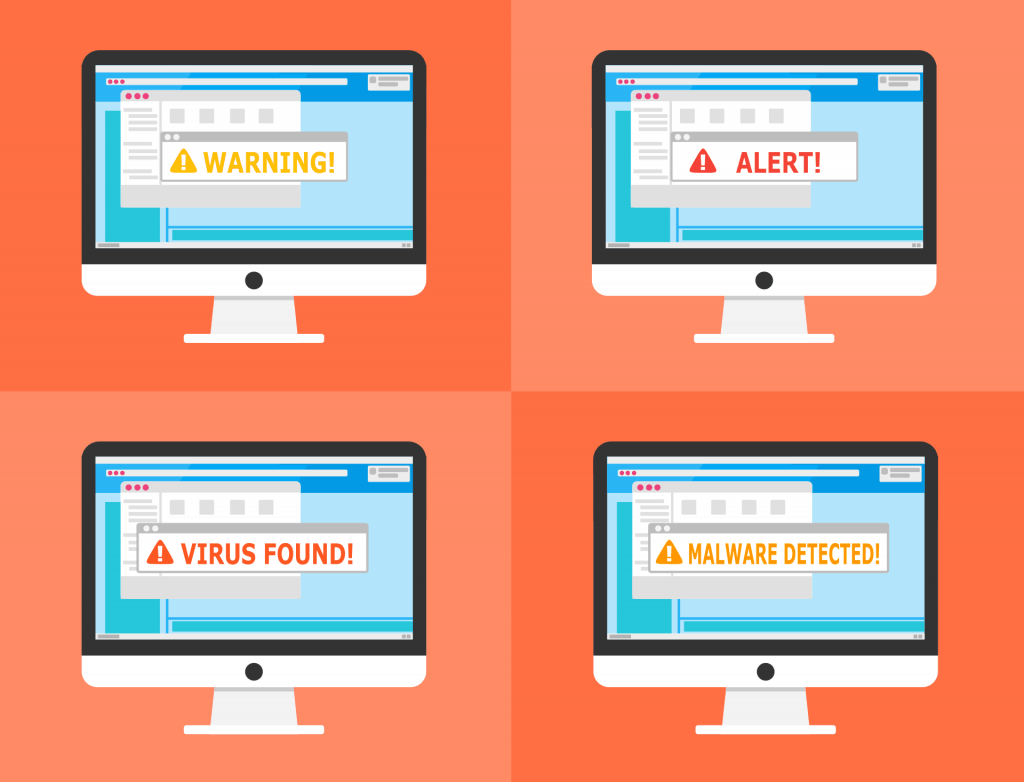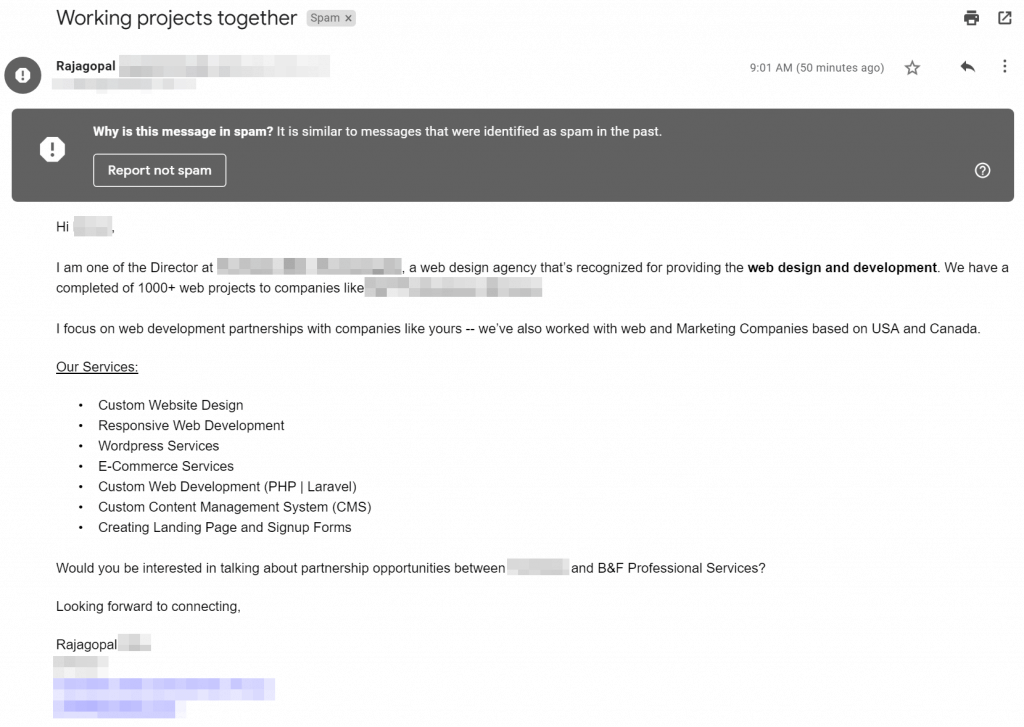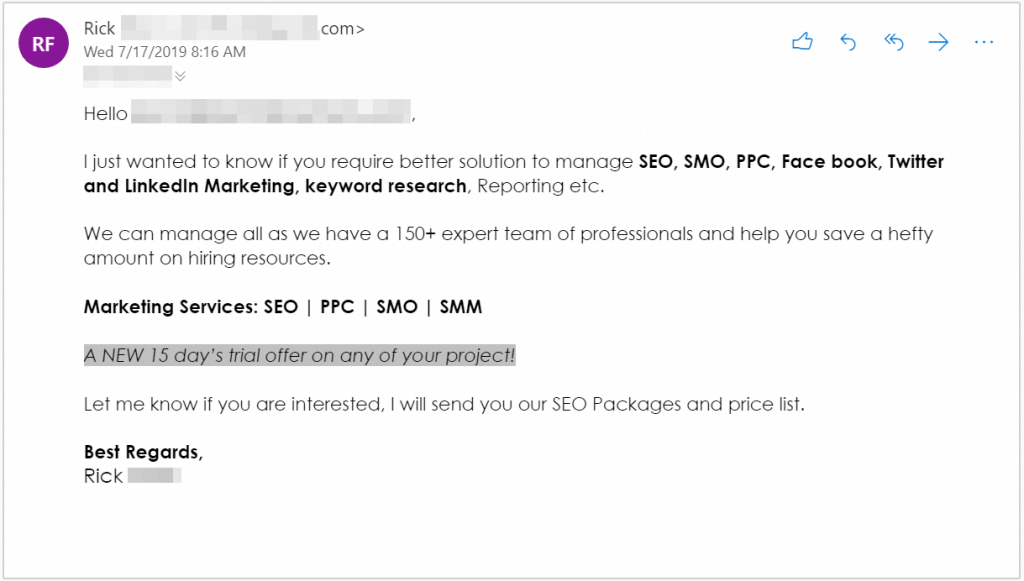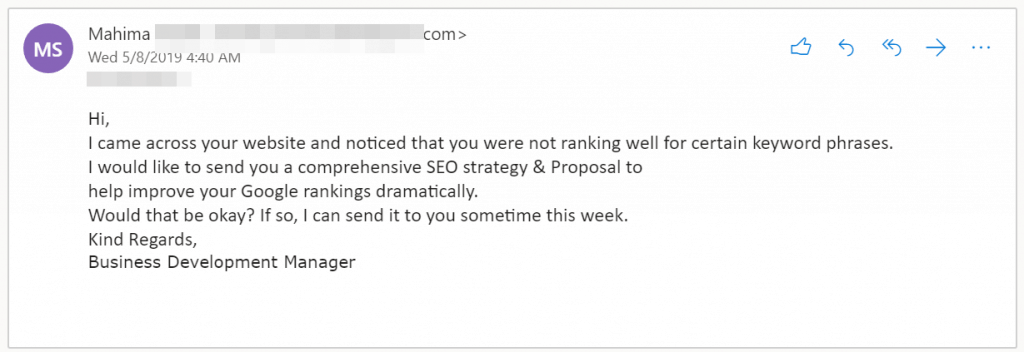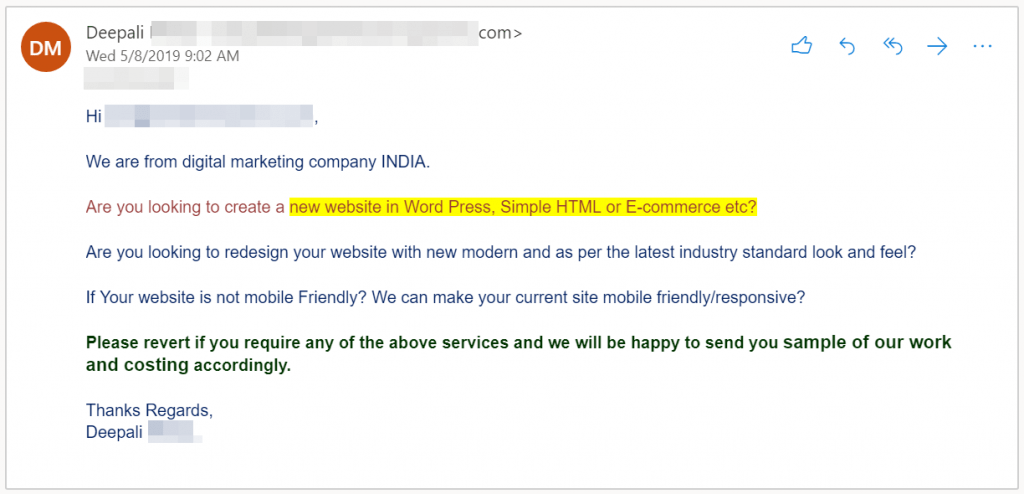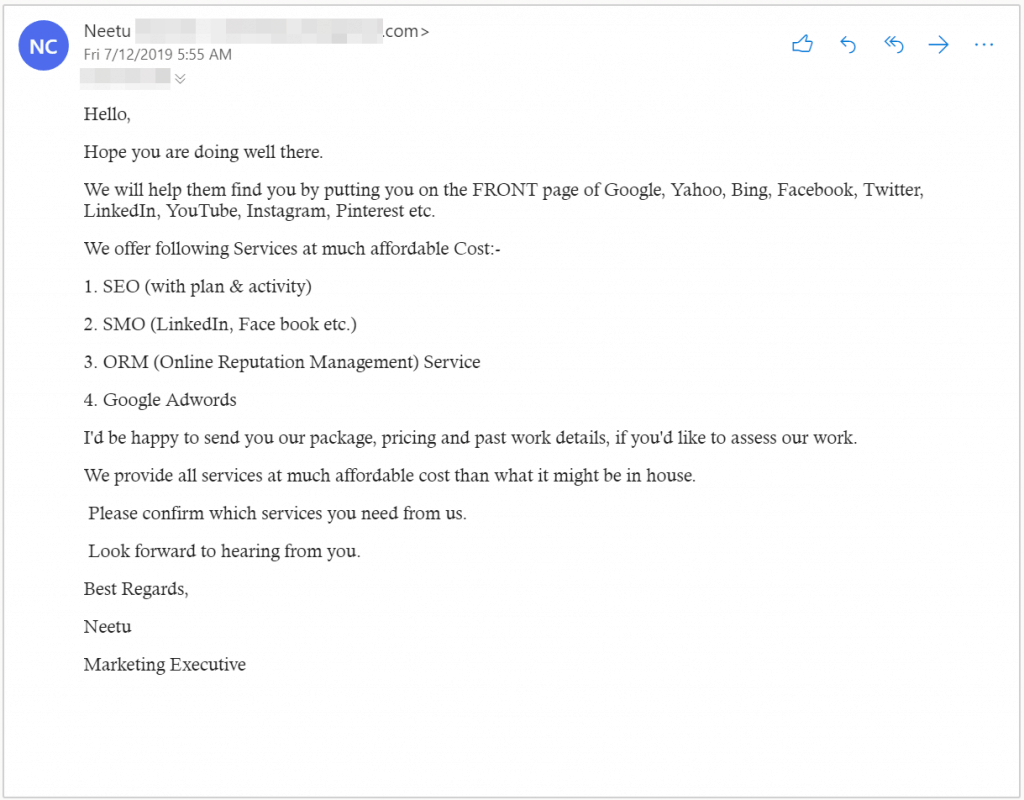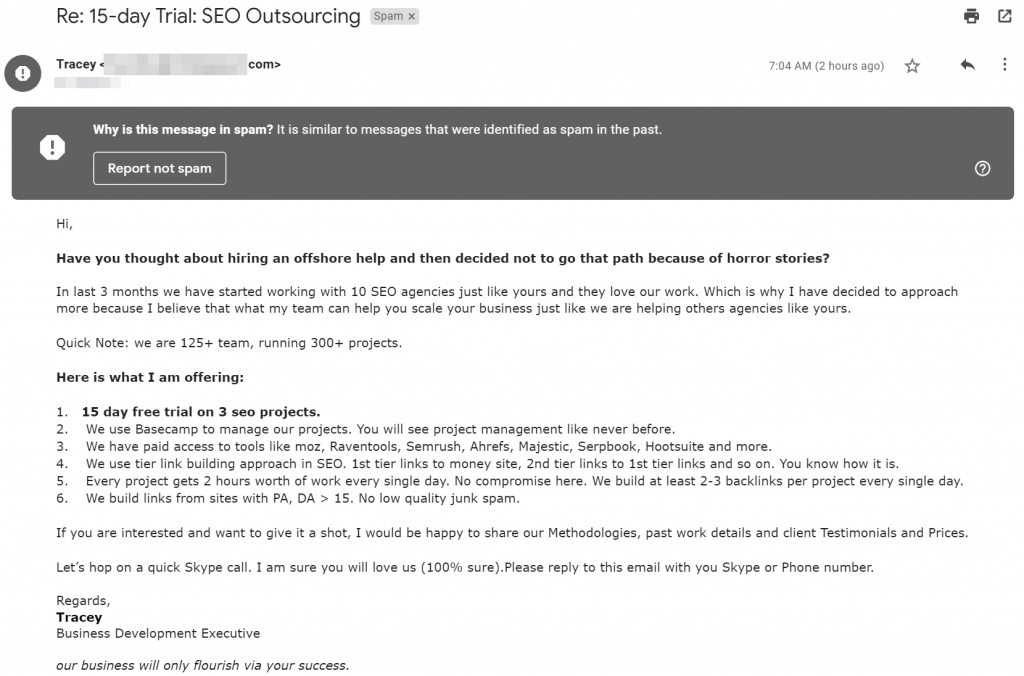- What ChatGPT (OpenAI) Is, How It Works, and How It Relates to SEO - February 16, 2023
- Semantic SEO - December 1, 2022
- Localism and SEO - October 18, 2022
If you have an email address, you know there’s nothing more annoying than receiving a spam message in your inbox. Spam email, or unsolicited messages sent in bulk, accounts for 56% of all email sent, which equates to 151 billion spam emails sent daily worldwide!
In the early days of the internet, spam emails — the digital cousin of paper-based junk mail — were initially used to help drum-up business. After all, sending out email costs far less than using regular mail and can reach larger audiences at a faster rate.
In addition, the internet offers relative anonymity. This works well for spammers as it allows them to use email to insert phishing software and malware all while hiding their identities.
More than a third of these spam phishing emails are often disguised as advertising-related emails that try persuading users to buy a product or service, like the SEO spam emails we’ll be going over in this article.
Table of Contents
What is SEO Spam?
With so many things vying for our limited attention spans, search engine optimization is an effective way to ensure that your website gets found by your ideal customers. Most business owners have come to realize the importance of using SEO for their company website, while email spammers have been taking advantage of this growing need.
SEO spam often refers to a form of solicitation from a nondescript SEO company promising top rankings and overnight results. SEO spam can appear as a comment left on your website or sent in the form of an email message to your inbox.
These emails usually originate outside of the country and point out numerous “errors” on your website. They promise to resolve all the issues they’ve identified, then attempt to sign you up for an expensive SEO plan.
The good news is that most of these emails are filtered out automatically and sent to junk/spam folders for us. However, some of the more experienced email spammers still manage to get their emails to show up in our inboxes.
Recipients of spam mail often have their email addresses obtained by bots, or autonomous programs that crawl the internet searching for email addresses. These addresses are then placed on massive distribution lists.
According to Kaspersky, most spam emails come from China (15.82%) and the US (12.64%). Other countries that round out the top 10 are Russia, Brazil, Germany, France, Argentina, Poland, India and Vietnam.
These spam emails unwittingly cost victims thousands of dollars and businesses $257 billion annually in lost productivity. Aside from losing money, more than half of website hacks are due to mishandled SEO spam emails.
How to Spot SEO Spam Emails
Most digital marketing professionals have seen so many of these messages that it’s easy for them to identify. However, it may be difficult for other people, which explains why so many get taken advantage of and why senders can earn up to $7000 per day sending out these emails.
Spam comes in all shapes and sizes but often follows a similar format. Here are some ways to spot SEO spam emails:
1.) Generalized email. Any business worth their salt knows how to send a professional message. The email will be personalized and addressed to the right person, but spammy emails like the one shown below include a generic message and subject line.
These emails usually lack any type of originality since they’re based off a template and are programmed to automatically insert your company name and/or website link to appear like it’s been personalized by the sender:
Some variations introduce their business, while others forego the introduction and go straight to their pitch by saying things like: “I noticed you have [insert problem],” then offer a website analysis or free trial offer to sell you on their services.
In the SEO spam message below, the sender immediately proceeded to talk about the types of services they offer without knowing anything about the specific needs of the business:
2.) No professional email address. Emails sent from free accounts like Gmail, Yahoo! and Hotmail are highly suspicious. If the sender worked for a legitimate company, they would contact you using their business email and provide you with other ways of contacting them.
3.) They don’t have their own website, or if they do it’s ugly and poorly designed. If the company contacting you doesn’t care about their own website, what makes you think they’ll care about yours?
4.) Awkward formatting. Another aspect of sending professional emails is knowing how to correctly format the message. One way to spot SEO spam is to watch out for things like awkward formatting and bad grammar/spelling, as shown in the sample below:
5.) Not from your area. Some state it outright while others keep it hidden. While SEO can be performed anywhere, it’s best to hire a company that’s based in the same country your business operates in. Would you trust somebody working in India to know the minute details of the location(s) you’re trying to rank in?
6.) Makes promises. Search engine optimization is effective as a long-term strategy and differs from website-to-website as the length of time it takes to see results varies.
In the example below, they claim to provide SEO services at an “affordable cost” than what it might cost to hire someone in-house, but how would they know this without first performing an in-depth evaluation?
Here’s another example of a company that guarantees “2 hours worth of work” and “2-3 backlinks per project every single day” without knowing anything about your business, industry type, market saturation or level of competition in your area:
7.) They encourage you to buy questionable backlinks. While building backlinks is a solid SEO strategy that’ll help you climb up the rankings, your SEO provider needs to know what they’re doing or you risk having your website blacklisted by Google through one of their many algorithm updates.
What Good SEO Companies Do
Please note that not all emails coming from SEO agencies are fake, spammy or malicious. In some cases, SEO companies use email to great effect as a way to find clients they want to work with. As a precaution, you should always check the credibility of any company you choose to do business with by conducting a little online research.
Some basics to watch out for:
- SEO company is searchable on Google and has an online presence (traceable)
- Email is sent under the company’s website domain
- Website provides valuable, informative content proving their knowledge and expertise
Remember that:
- Reputable SEO companies will prepare a customized analysis before making any recommendations
- SEO varies from business-to-business and a one-size-fits-all solution is not realistic
- SEO may take some time at the beginning, so providing an exact date to achieve results is difficult (and highly suspect)
- SEO is a specialized skill; any company charging “rock bottom” rates is likely cutting corners at your company’s expense
How to Avoid Email Spam
Now that you know how to spot spam, it’s important to know how to prevent it. Here are some things to do:
1.) Don’t open suspicious emails. Spammers usually collect email addresses by sending emails that contain a tracking pixel. If you open it, they’ll know your email address is active. However, an unknown sender could be a prospective customer, so use your best judgment and be careful!
If you use Gmail, you can use extensions such as Ugly Email or Pixelblock, which lets you know if the email has a tracker embedded.
2.) Block all spam. Use spam blocking tools if you can. If you’re running your website on WordPress, a simple plugin like Akismet keeps most spam comments at bay.
For email, make sure to manually set up filters as needed and activate any spam blockers available to you.
3.) Do not respond to SEO spam emails. Once you do, you invite the spammer to send you even more messages. All it takes is one careless link click and your computer can be compromised!
4.) Never give your email address away. Don’t publish your email online or give it to entities you don’t know or trust. Some companies may use your information on several of their own spam-filled mailing lists or sell them to other email spammers.
a.) If you have a business website, have your customers contact you through a contact form.
b.) Keep your email address set to ‘private’ on all social media platforms.
c.) If you’re buying a domain, opt for the domain privacy feature. It may cost a little extra but it keeps your contact information from appearing on the WHOIS searchable database.
Conclusion
Automated SEO spam isn’t just annoying, it discredits the hard work of legitimate SEO agencies and can put your business at risk if you’re not careful.
While modern email inboxes do most of the heavy lifting these days, some messages can still find their way through to your inbox thanks to some very savvy email spamming techniques.
The next time you receive a questionable email message in your inbox, remember all the signs of SEO spam email behavior described in this article and do not — I repeat — DO NOT open these emails!
We hope you learned something today about spotting SEO spam. Visit our blog for more articles and subscribe to learn more about search engine marketing!

